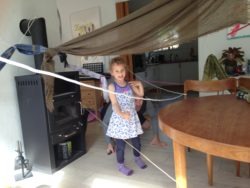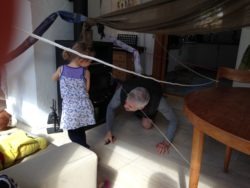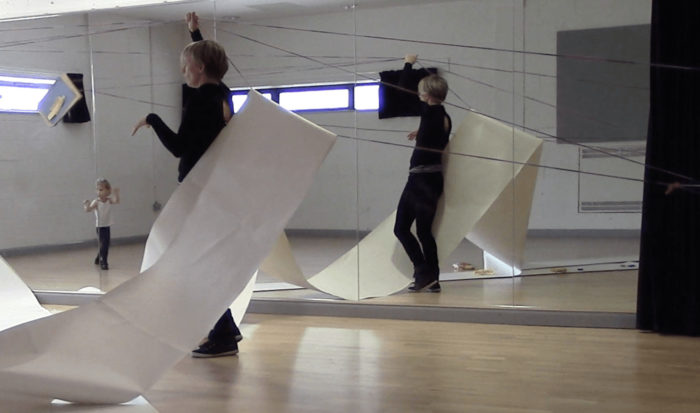Response 35 - String Theory
Dear Alan,
thanks for this opportunity to do some diffractive mapping!! Another impossible task: Making a map without drawing or representing anything on paper but instead creating a dynamic map that takes no ‘data’ for granted. Hmm!
As we were visiting the hospital for my 20 week pregnancy scan last week, I took the opportunity to roam around the hospital space, as you explained, for purposes of research. Although Horsens Regionshospital (regional hospital) is not the largest of its kind, it is surprisingly easy to get lost there. My intention of roaming was precisely to explore without a particular aim and losing track of the connections between hallways, floors and buildings. I am particularly interested in the layout and design of the transitional areas like foyers, stairs and corridors, the liminal spaces that connect ‘the important hospital rooms’. What occurred to me when meandering around was that transitional areas are designed to push you forwards to nudge you towards your destination. Several times I was asked kindly – as I paused or slowed down in a corridor – if I was lost or needed help to get anywhere.
I wanted to represent the moving, embodied and emotional aspect of this investigation. How could the experience of ‘journeying’ and ‘going forwards’ itself be the product? How could the mild discomfort of obstructing other people’s work space be represented? I thought back on a studio session in Leeds in 2016 where Lisa and I were playing with long threads of yarn. We tied the yarn between doors, chairs and hooks to create a landscape to play within.
The marking of space by tracing the room with a thread tied between points gave form and coherence to the room, making obstacles that changed how we navigated the space. Here is what I did:
The haphazardly edited (and too long) video was made to illustrate what the static map couldn’t: a dynamic and exploratory map that takes no data for granted!
When you and Lisa found my ‘installation’ later that afternoon (I hadn’t bothered taking it down again) the trail of string, scarves and skipping row became an obstacle course for play. The divided space it created forced us to crawl under strings or climb furniture as we were imagining that if we touched them we would be ‘zapped’ by electric wires. This game emphasised the layout of the room and the relationship between objects, floor and ceiling. Lisa later discovered that pulling the string in one place would have repercussions throughout the entire installation shifting the knots and crossing of lines.

 The experience in the hospital and the setting up of my trail in the living room brought to mind anthropologist Birgitte Folmann’s use of the word ‘wayfinding’ in her presentation on hospital environment for our ‘Fieldwork in the Body’ Workshop in Aarhus 20 May, as you also mentioned in your task. The term ‘wayfinding’ resonated with the sense of movement and embodiment I experienced as a an impromptu way of navigating an unfamiliar space (an actual unfamiliar hospital environment and a familiar home environment made unfamiliar with the obstructive installation). I looked the term up on Wikipedia and it took me to this explanation of the concept by anthropologist Tim Ingold (Being Alive, 2011, p. 148):
The experience in the hospital and the setting up of my trail in the living room brought to mind anthropologist Birgitte Folmann’s use of the word ‘wayfinding’ in her presentation on hospital environment for our ‘Fieldwork in the Body’ Workshop in Aarhus 20 May, as you also mentioned in your task. The term ‘wayfinding’ resonated with the sense of movement and embodiment I experienced as a an impromptu way of navigating an unfamiliar space (an actual unfamiliar hospital environment and a familiar home environment made unfamiliar with the obstructive installation). I looked the term up on Wikipedia and it took me to this explanation of the concept by anthropologist Tim Ingold (Being Alive, 2011, p. 148):
[We] use paths which ultimately entwine much like a knot; the more the lifelines are entwined, the greater density of the knot. In a wayfinding context, our own routes thus impact other people's routes. We do not, in other words, wayfind in social vacuums, but in a socially dynamic environment.
This summarises what the ‘Fieldwork in the Body’ workshop ended up being.

